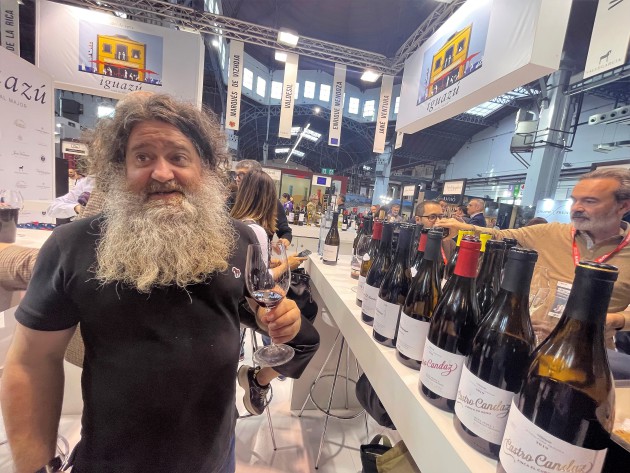
Arribaes: The New frontier of Iberian fine wines
It is known as Arribes del Duero in Spanish, and Arribas Do Douro in Portuguese, but now Iberian producers in this cross-frontier wine region have joined forces to create Arribaes, a new brand of low-intervention fine wines.
“We share a common vision, grape varieties, climate, and soils – there has always been an interaction between both areas even before both countries [Spain and Portugal] were formed,” said Jose Manuel Beneitez Lopez, winemaker at Hato y Garabato, one of four producers who are leading the new Arribaes association.
The creation of Arribaes comes as the region is fast attracting winemakers who are searching to tap into a lesser-known source of fine wine production made from native grape varieties at high altitude.
Speaking at Spanish wine fair, Barcelona Wine Week, this week, Raul Perez, the bearded ‘wizard’ of Spanish wine, exclusively told Harpers that he was now making wine at Hato y Garabato.
Perez has made wine from old field blend vines on Hato y Garabato’s estate near Zamora and is ageing wine from the 2021 harvest in large French barrels at the producer’s winery.
Meanwhile, Carlos Capilla Barreda, technical director of the Arribes DO appellation in Spain said four wine companies from Leon, Bierzo, Toro and Rioja would be investing in new projects in the Arribes DO this year.
The principals of the new Arribaes brand include sustainable agriculture, traditional native grape varieties, handpicked grapes, and low-intervention practices; sulphur is the only chemical element permitted in wines.
Members include Hato y Garabato, Arribas Wine Company, Pictoes Wines and Bodega Frontio, owned by Thyge Benned Jensen, a Dane who was appointed chairman of the Arribes DO appellation of Spain in February this year.
Arribaes members want to create a new appellation that would straddle the Portuguese-Spanish border. On the Spanish side, the Arribes DO was created in 2007.
Ribera del Duero pressured Spanish authorities to ensure that the word ‘Duero’ was not used in the name of the appellation, even though Arribes del Duero is the traditional name of the region, but some producers now want to reclaim the Arribes del Duero name.
Over the past four years, the Arribes DO production area, which is home to old vines of 60 to 80 years in age, has grown by 30 ha to more than 285 ha.
Juan Garcia and Bruñal are the dominant grape varieties in the Arribes DO, but the appellation is now actively protecting native grape varieties from extinction.
Speaking at Barcelona Wine Week, this week, Capilla Barreda told Harpers that Arribes DO had, two weeks ago, officially registered five native grape varieties: the white Puesta en Cruz, which is a relative of Portugual’s Rabigato, and four reds, Tinta Jenomo, Gajo Aroba, Bastardilllo Chico and Mandon.
“We have learnt that these grape varieties, which are found in field blends, do not exist elsewhere in the world,” Capilla Barreda said.
“Producers can now obtain the plasma from these varieties to plant more of them.”
Barreda added that versatility in production was one the advantages of the Arribes appellation: “Whether producers pick in August to make lighter wines or in October to make full-bodied reds all wines have great natural acidity.”
Hato y Garabato’s wines include the high-end Buen Jera and Sin Blanca. The latter is a wine made from 15 grape varieties grown in vineyards of up to 100 years old at altitudes of between 400m and 800m.
Hato y Garabato is one of the region’s producers which have recovered native grape varieties from extinction such as Doña Blanca and Puesta en Cruz. Its wines are imported to the UK by Portuguese specialist Raymond Reynolds. It is also one of about 20 Spanish wine producers who will attend Simplesmente Vinho between 2 and 4 July in Porto this year. “Simplesmente Vinho is an Iberian wine fair,” said João Roseira, director of Simplesmente Vinho, highlighting how Iberian producers are increasing joining forces to make and promote high quality wines.
Keywords:
- wine
- new
- UK
- Producers
- Wines
- Spanish
- Spanish Wine
- varieties
- appellation
- Grape
- DO
- grape varieties
- del duero
- barcelona wine week
- arribes
- hato
- native grape
- arribes del
- native grape varieties
- arribes del duero
- actively protecting native
- reds tinta jenomo




